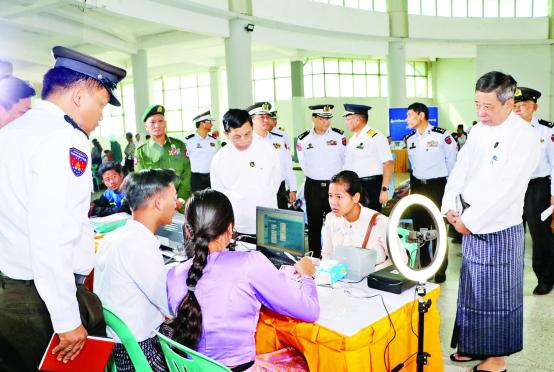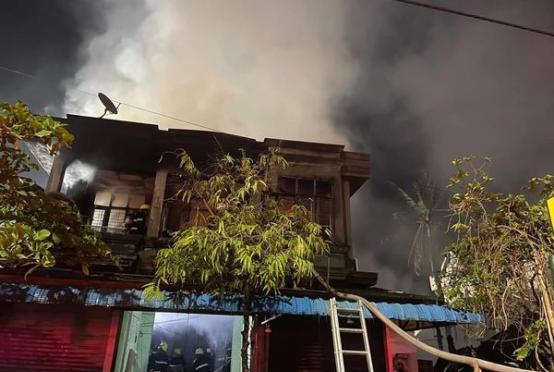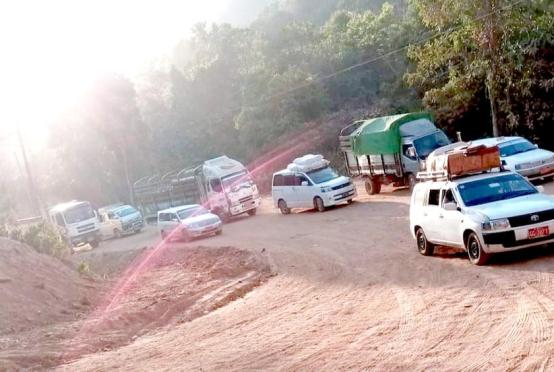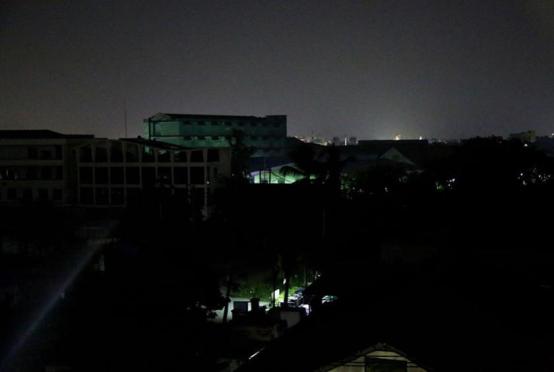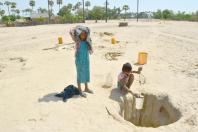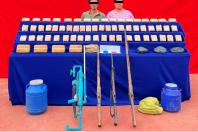by Yusuke Tomiyama
TOKYO (The Japan News/ANN) - Steady observation results obtained by Japan over the past 30 years have contributed to assessing this change accurately and forecasting future developments.
The continued melting of sea ice in the Arctic Circle is influencing the lives of inhabitants in the region and beyond, as well as the marine ecosystem. Steady observation results obtained by Japan over the past 30 years have contributed to assessing this change accurately and forecasting future developments.
From aboard a research ship last October, parts of the Arctic Ocean were observed to be covered with thin floating discs known as “pancake ice.”
The sea ice has definitely been decreasing. This was the impression of Associate Prof. Jun Inoue, an expert in meteorology at the National Institute of Polar Research, when he observed the ocean ice from aboard the RV Mirai, a research vessel of the Japan Agency for Marine-Earth Science and Technology. He had seen the same seascape from the Mirai in November of the previous year.
Measuring 128.5 meters in overall length and 19 meters in width, the Mirai can accommodate 80 people. The ship was rebuilt from the Mutsu, Japan’s first nuclear-powered ship, after the nuclear reactor was removed and replaced by a diesel engine.
Usually, the Arctic Ocean at this season is covered with thick ice. It used to be inaccessible to the Mirai, which does not have ice-breaking capabilities. But in recent years, the Mirai has been able to navigate through the ocean. The Mirai made its maiden Arctic Sea voyage in 1998.
Why have abnormal changes been occurring in the Arctic? Japan, in fact, extensively researches that question. In 1987, then Soviet leader Mikhail Gorbachev proposed restricting military activities and conducting international science research in the Arctic region. The Soviet Union and other nations, including the United States and European countries, established the International Arctic Science Committee in 1990.
Since 1991, when the National Institute of Polar Research set up a research base in the Svalbard Islands, a territory of Norway, Japan has continued to measure greenhouse gas emissions, including carbon dioxide (CO2) and methane, once a week without fail. In 1996, Japanese researchers confirmed that the concentration of CO2 was increasing, and in 2006 they did the same for methane.
Accurately observing Arctic weather is no easy task, but Japan has pioneered innovative observation methods based on its experience in Antarctic research conducted since the 1950s, including ways of preventing observation equipment from being covered by snow and ice. Prof. Shuji Aoki of Tohoku University, an expert in aeronomy who was involved in observation work as a research assistant when the observation base was established in Svalbard Islands, said proudly, “Tracing atmospheric data in the Arctic region collected over many years of observation attracts the attention of world researchers even today.”
It was recently found that temperatures in the Arctic had been rising at more than twice the pace of other regions. The Arctic has fallen victim to a vicious cycle in which sea ice that would normally reflect sunlight melts, leading to the sun’s heat being absorbed by seawater, raising its temperature and melting ice further. This change has also been observed by the Japan Aerospace Exploration Agency’s satellite and the Mirai.
Arctic research has been a national project since 2011. This is because temperature changes in the Arctic had begun to be pointed out as factors that would cause extraordinary meteorological phenomena in Japan, including heavy snow. Hiroyuki Enomoto, vice director general of the National Institute of Polar Research, said emphatically: “What’s happening in the Arctic will lead to what will happen in Japan. [Changes there] are not a matter of what’s happening in a faraway place.”
Japan’s scientific efforts are essential also for those living in or near the Arctic who have been affected by abnormal changes. Flooding and sediment disasters have been occurring frequently in regional communities of Greenland. Supporting these residents is a team that includes Prof. Shin Sugiyama of Hokkaido University, a specialist in snow and ice science.
By measuring the amount of accumulated snow in these regional areas, the team has collected data showing that the rise in temperatures has led to the melting of ice, which in turn has resulted in various natural disasters. It reports the latest data every year during meetings held for the residents. They distribute maps of places where landslides are likely to occur, thereby calling for their attention.
Research groups, including Tohoku University, produced Russian-language teaching materials on the environment last November for residents of the Sakha Republic in the Russian Far East, where flooding occurs due to heavy rain. The materials are designed to answer residents’ questions on abnormal environmental changes in order for them to prepare for disasters. Residents are said to appreciate the group’s contributions, saying that they “have become more knowledgeable about what has been happening.”
Yuichiro Fujioka, an instructor of geography at Kyushu University who was in charge of producing the teaching materials, said, “We’d like to consider solutions together with the residents while exploring matters of mutual concern.”
Given the decrease in sea ice in the Arctic Circle, the use of a navigation route from the Bering Strait to Northern Europe along the Russian coast has been increasing.
This route shortens the voyage from Japan to Europe by 40% compared with the conventional route via the Strait of Malacca and the Suez Canal.
Statistics compiled by the Land, Infrastructure, Transport and Tourism Ministry show that the total amount of cargo transported to Europe via the Bering Strait route was about 20 million tons in 2018, a fivefold rise from about 3.9 million tons in 2013. According to reports from the U.S. Geological Survey, 13% of the world’s yet-to-be discovered crude oil and 30% of undiscovered natural gas is estimated to exist in the Arctic Circle.
In a speech in Finland last May, U.S. Secretary of State Mike Pompeo said: “The world has long felt magnetic pull towards the Arctic, but never more so than today ... The region has become an arena for power and for competition.”
The Arctic, access to which has become easier due to global warming, is emerging as a new theater in the struggle for supremacy.


